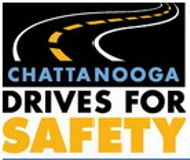4/28/2009
Chattanooga, Tennessee Traffic Cameras Fail to Reduce AccidentsAccidents increase six percent at Chattanooga, Tennessee intersections where red light cameras operate.

Since their installation in December 2007, red light cameras in Chattanooga, Tennessee have failed to decrease the number of collisions at the locations where they are used. The UK-owned firm LaserCraft operates automated ticketing machines at six city intersections, splitting the revenue generated with the city. Officials claim the two primary objectives of the program are:Instead of a decrease, the total number of accidents at these locations increased six percent from 143 to 152, according to the city's own data. At most of the locations, there was little or no change in accident frequency following the installation of cameras. The only significant change was seen at Fourth Avenue and East 23rd Street where ten accidents in 2007 jumped sixty percent to sixteen in 2008.
- Save lives
- Decrease the number of accidents, injuries and fatalities caused by speeding and red light running.
A report issued by the Tennessee Center for Policy Research in September likewise found no demonstrable benefit to camera use after a preliminary review of accident data from a number of cities, including Chattanooga (view report). The report cited a note of caution from the work of engineer Dale Gedcke when reviewing such accident reports.
"First, the number of accidents reported before and after red light camera installation is so small that the statistical uncertainty in those numbers obscures any trend," the report stated. "Second, there are so many confounding variables (weather, day of the week, traffic flow, construction projects, etc.), that it is extremely difficult to extract the true effect of red light cameras without removing the effect of those confounding variables."
The Tennessee Center for Policy Research suggested that, since photo enforcement has failed to prove effective, a far better alternative to the use of red light cameras would be to lengthen yellow intervals at intersections with a high number of accidents. A state law that took effect in January in Georgia mandated an extra second of yellow at red light camera intersections. As a result, violations dropped up to eighty percent in compliant cities, enough that officials in seven cities are looking to drop the use of cameras entirely.
Instead of longer yellows, however, Chattanooga was caught in March 2008 with shortened warning periods at at least one location. A municipal court judge ordered the refund of 176 red light camera tickets issued at Martin Luther King Boulevard and Pine Street because the yellow was illegally short.


